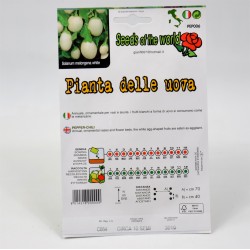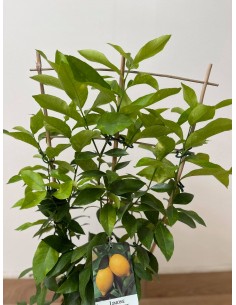Tea Plant (Camelia sinensis)
Generalities :
Its scientific name is Camellia sinensis, this plant is famous all over the world for the use of the leaves and buds used for the production of tea. The tea plant belongs to the Camellia genus, of the Theaceae family. In the world it is also known as the tea tree but in Italy we must be careful not to fall into misunderstanding, with us, the term "tea tree" refers to the species Malaleuca alternifolia, the tree from which tea is extracted tree oil, in fact, tea tree oil; despite the similar name these two species have nothing in common.
- Vase 11cm, Height 30cm
Generalities:
Camellia sinensis Kuntze is the tea plant, which is the species of plant whose leaves and buds are used to make tea. It belongs to the genus Camellia, a genus of plants of the Theaceae family. All types of tea originate from the processing of the leaves, buds and other parts of this plant: only the processing methods differentiate the various types.Camellia sinensis is an erect shrub, with ovate-sharp leaves, with a toothed margin, bright light green color; the simple flowers of small size, white in color, bear numerous golden-yellow stamens; it is native to the continental part of South and Southeast Asia, but today it is cultivated all over the world, especially in tropical and subtropical climate regions. In its natural state it can grow well over two meters but, to facilitate its cultivation, it generally keeps to the size of an evergreen bush or small tree. The roots are strong and the flowers can be white or yellow, 4 centimeters in diameter and 7 or 8 petals. The leaves are 4 to 15 cm long, and 2 to 5 cm wide. A fresh leaf contains about 4% caffeine.
USE: The seeds of Camellia sinensis can be squeezed to obtain a sweet oil used in cooking, not to be confused with the essential oil, the so-called tea tree oil, which is actually extracted from a different plant (Melaleuca alternifolia) and has a cosmetic and medicinal use. Tea seed oil is cold pressed from the seeds of Camellia oleifera or Camellia sinensis, in Japan also from the seeds of Camellia japonica, has a high smoke point (250 ° C) and is the main cooking oil in some southern provinces of China, such as Hunan. Tea seed oil resembles olive oil and grape seed oil due to its excellent preservative properties and low saturated fat content. Monosaturated oleic acid can comprise up to 88% of fatty acids. It is rich in vitamin E (antioxidant) and other antioxidants and does not contain natural trans fats. In addition to use as a condiment, for sauces, stir-fries and margarine production, tea seed oil is used to make soap, hair oil, lubricants, paint and an anti-rust oil as well as in the synthesis of other high molecular weight compounds. . Japanese tea seed oil is used to treat the hair of sumo wrestlers and for tempura (fried batter).
Cultivation and Care :
For cultivation, the tea plant prefers a position in full sun but also areas rich in humidity and with a fertile substrate.Camellia sinensis is cultivated mainly in tropical and subtropical areas, where rainfall can reach 2 meters per year ; the most suitable soil is acidic and permeable, without water stagnation.























